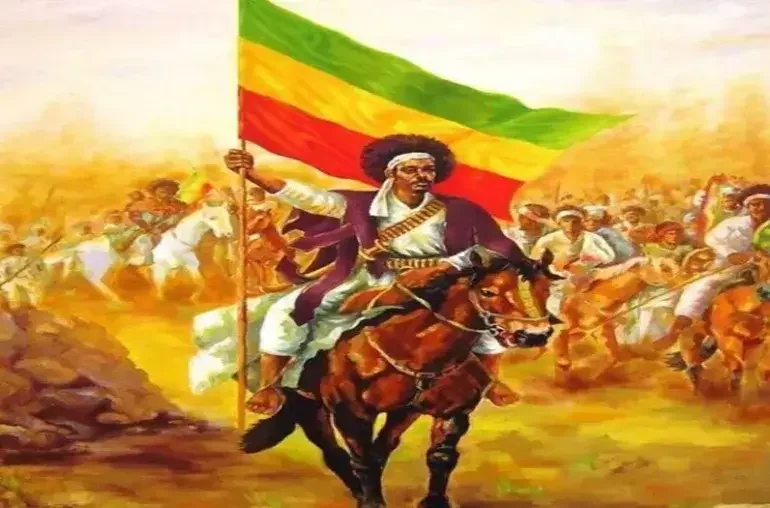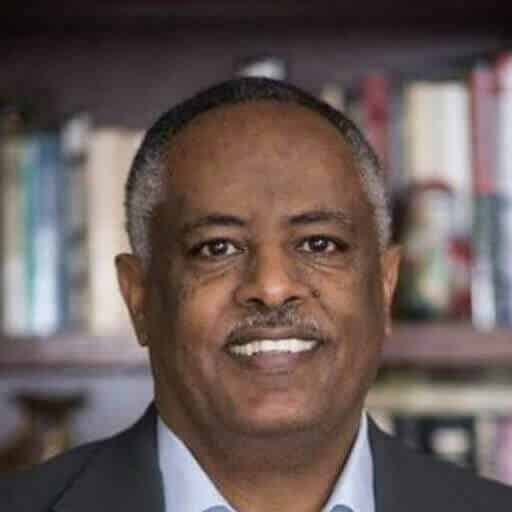 Tesfa ZeMichael, B.Phil.
Tesfa ZeMichael, B.Phil.
By all counts, the Adwa Museum is impressive. “Render to Caesar the things that are Caesar’s.” PM. Abiy should be congratulated for building a museum that does honor to the Adwa Victory.
Precisely because the Adwa Museum is striking, it raises equally striking questions. The philosophy of history tells us every “historical situation contains its own unique utopian perspective” and bears within itself a vision of a better society. That is, no historical event is a “flat barren island.” It is connected to the past and the future and is internally complex and contradictory. It contains within itself its own self-critique and a promise of a better future.
Thus we need to grasp the Adwa Victory as a historical process that is connected to the Ethiopian past and future and that is internally complex, dynamic and contradictory. Otherwise we make it a static event, fossilize it and erase the liberating vision it incubates.
Adwa is integral to the historical process that saw within a span of few years (1889-1914) achievements that have not taken place in Ethiopia during the previous centuries: the building of modern schools, hospitals, roads, bridges, and a railway line, telephone and telegram systems, a post office, water pipes, the creation of a Bank, and the introduction of vaccines. True, these were mere drops in the sea of Ethiopian needs, but they were all pregnant of future-oriented emancipatory visions.
The point to underscore here is the fact that the victory of Adwa (1896) was at the crossroads of a budding new Ethiopian future and a withering old past. Considered in its interrelations with the new achievements that surrounded it, the victory of Adwa gestated a future-oriented emancipatory vision. It carried within itself a critique of our past failures and a promise of a better future.
It is precisely because of its historicity that we should consider Adwa as an incomplete political, economic, and social process that incubates an invitation to Ethiopians to actively pursue its emancipatory vision: to struggle against internal domination as they have at Adwa against external domination. As an achievement of Ethiopians coming from the four corners of the country, Adwa beckons Ethiopians to fulfil the liberating vision that gestates in it, i.e., increase the spheres of freedom and equality, unity and fraternity, economic success and justice.
In the present context of internal domination—witness the unending multiple massacres of civilians in Amhara, Tigray, Oromia, and the Southern regions conducted by Dr. Abiy’s forces and drones—it is crucial to draw a lesson from Adwa: Internal domination, like external domination, can be defeated only and only if Ethiopians exit from their ethnic wombs, unite as citizens, and defeat the present internal domination as they have the threat of external domination at Adwa.
If we do not inject this lesson into the Adwa Museum and transform it into an inspiration, a call, and a site for challenging the internal domination that Dr. Abiy is inflicting on Ethiopians, then we would have fallen into the PM’s trap: the reduction of the Adwa Museum to a tourist attraction from which we draw a hollow prestige that blinds us to our current political and economic miseries.
We would have then made the victory of Adwa “a history lacking history,” fossilized it and stripped it of its liberating questions and possibilities. We would have forgotten the historicity of Adwa and made it “a stranger in a strange land.” Let me give one example of this “stranger in a strange land” experience.
Adwa gave birth (1897) to the green-yellow-red Ethiopian flag. Coming after the defeat of Italy, it embodied the unity of Ethiopians and affirmed the rejection of domination. In the historical context in which it was born, as indicated above, it had a future-oriented dimension that points to that which in us is more than us: our future as free, equal, and united Ethiopians. Achieving this is a task that demands historically-rooted reflections and actions that eschew short cuts of the kind that brought us the calamities of 1974, 1991, and 2018.
The Adwa Museum stands, however, under the dark shadows of the TPLF designed flag—a flag that symbolizes ethnic enmities and segregations. As the flag of ethnic politics, it disparages Adwa’s historically germinating vision of freedom, equality, and unity. The spirit of fraternity that imbued the Adwa Victory is what the TPLF-designed flag crushes. And yet, it is flying over the Adwa Museum. What a sacrilege!
Whereas the TPLF flag trumpets ethnic inequalities, ethnic hatred and separation, the flag of Adwa announces a vision of freedom and equality, and of a united Ethiopia that has overcome the ethnic self closures and conflicts that at the time of Adwa afflicted the rest of Africa and enabled Europeans to divide and colonize Africans.
The green-yellow-red flag of Adwa symbolized and still symbolizes the transcending of ethnic identities and the affirmation that being an Oromo, a Tigrayan, an Amhara, a Muslim, a Christian, and so forth, are different, fraternal, and treasured ways of being Ethiopian and not vehicles of ethnic hatreds and separations.
The TPLF flag at the Adwa Museum desecrates the Adwa Victory and is an affront to the thousands who came from all parts of Ethiopia to defend their country as Ethiopians. It makes the Adwa Museum a site of programmed amnesia of the liberating possibilities that Adwa incubated through the sacrifices of so many. The TPLF flag, now the logo of Dr. Abiy’s ethnic politics and government by armed drones, defiles the memory of the men and women who fell at Adwa defending Ethiopia.
Dr. Abiy is a highly educated person but he is driven by the “will to ignorance.” Witness his endless claims of fictional facts in and outside parliament. His ambition is to bend Ethiopians to his “will to ignorance,” erase the Adwa Victory as a historical incubator of a critique which questions his ethnic divide-and-rule politics that makes Ethiopians enemies of each other. He wants Ethiopians to see the Adwa Victory as a fossil to be admired and not as a living deed that gestates an alternative to his ethnic politics
But Ethiopians are capable of recognizing that every history is a document of civilization and barbarism. They are able to identify and jettison the barbarisms of Adwa’s era and draw on the civilizing potentials of the Adwa Victory that point beyond it and thus beyond Dr. Abiy’s politics of ethnic divide-and-rule.
Ethiopians who refuse to submit to Dr. Abiy’s “will to ignorance” are a mortal danger to his tyranny. Why? Because they will be able to identify our barbarisms, cast them away, appropriate, rework and develop the civilizing potentials of not only Adwa but also of the great traditions and deeds—gada, bude, shir, yejoka qicha, and so forth—of the various ethnicities of Ethiopia. They will then overcome the particularities that divide them and flourish in the universality that inhabits and unites them.
So, is there any reason why Ethiopians should follow Dr. Abiy and subordinate their ideas and actions to his “will to ignorance,” confine Adwa to the past, and forget the liberating vision that throbs within it?
It is up to Ethiopians to rescue the Adwa Museum from the infamy of being an object of tourism that fills the coffers of Ethiopia’s oppressors. Ethiopians must, out of respect for those whose sacrifices made the Adwa Victory possible, transform the Adwa Museum into a citizens’ site of struggle for citizenship, i.e., freedom, equality, social justice, rule of law, and democratic federalism.

















Well said.
“It is precisely because of its historicity that we should consider Adwa as an incomplete political, economic, and social process that incubates an invitation to Ethiopians to actively pursue its emancipatory vision: to struggle against internal domination as they have at Adwa against external domination”
I will add ” to continue struggling against foreign domination via indirect, neocolonial means through the installation of puppets and foreign agents such as Abiy Ahmed Ali.